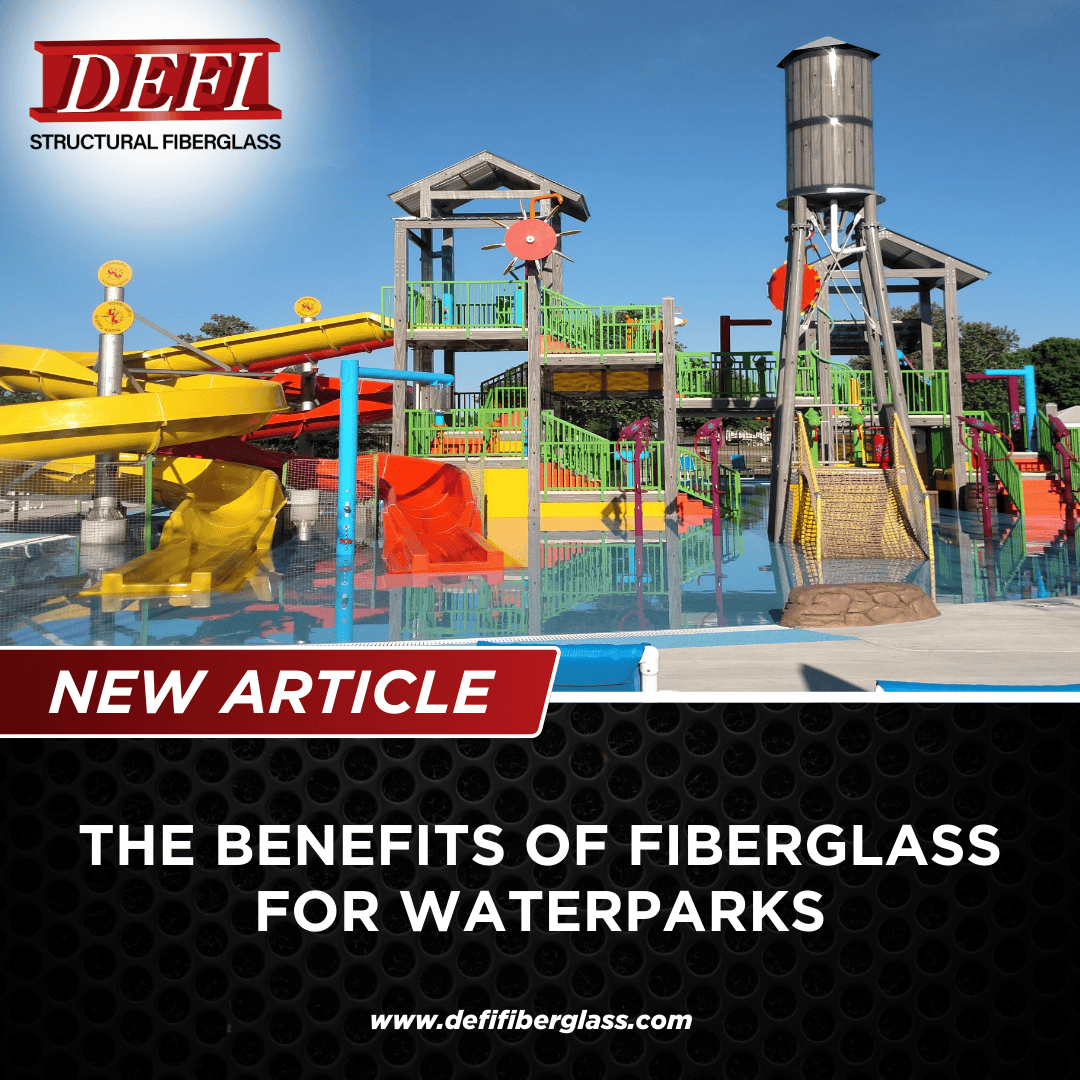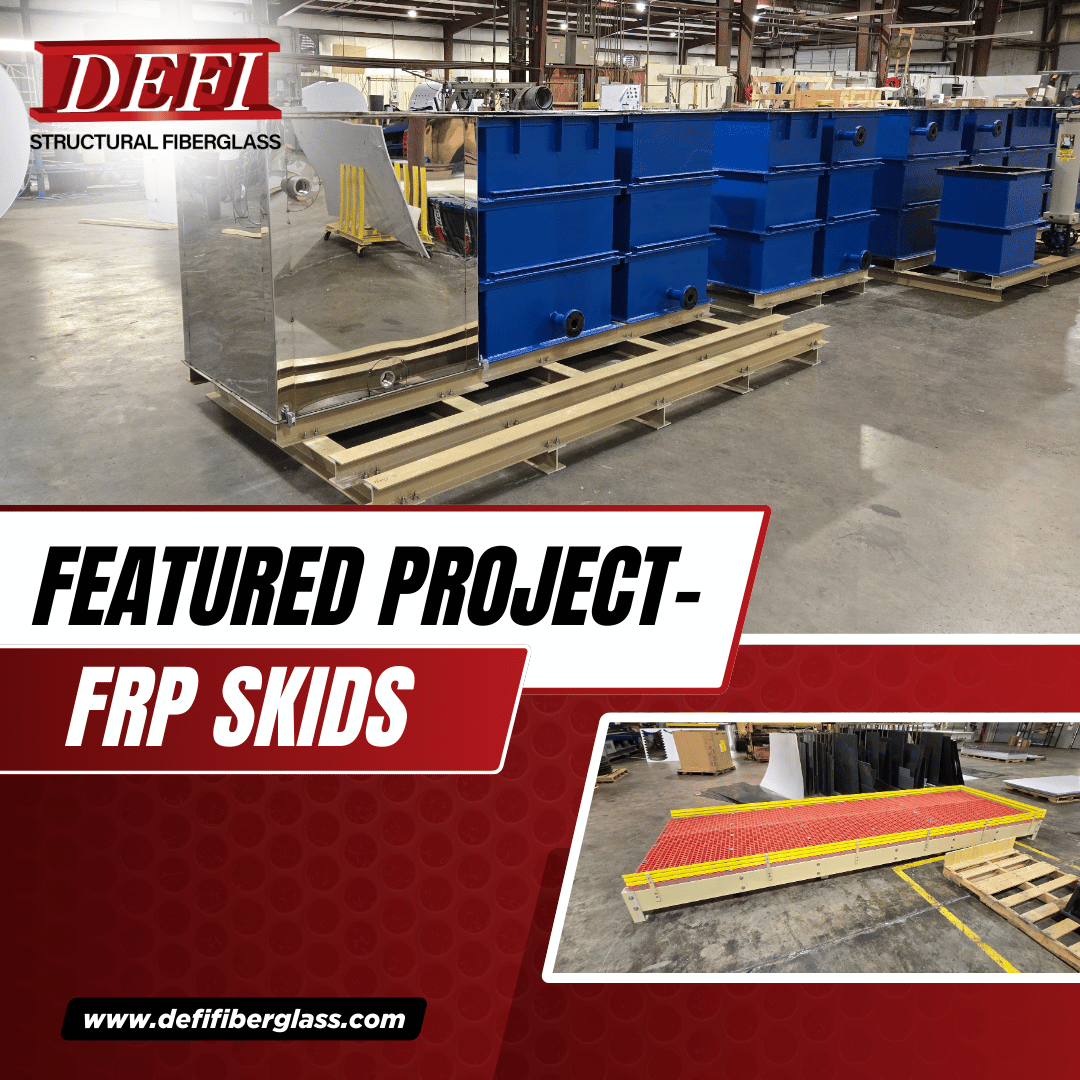A: FRP stands for fiber-reinforced plastics, it’s a term typically used stateside here in North America. GRP is a term that means the same thing. But it’s generally used over in Europe and Asia and stands for glass-reinforced plastic.
The backbone of the industrial revolution has always been thought to be led by the steel industry. While steel still plays an especially important role in structural building it has drawbacks. In fact, all metals do because even the strongest metal will eventually succumb to rust. Whether aluminum or steel—there is no metal impervious to the elements.
Wood is even more fragile as even though it does not rust, it can be weakened by moisture. It can also be broken by force, ravaged by termites, or succumb to mold.
Some might suggest simple plastic as an alternative and while they’re on the right path—it’s not quite right. Plastic alone can warp and will crack or melt when exposed to high temperatures, and it lacks strength. However, the solution isn’t too far from it.
FRP IS THE ANSWER
In all honesty, there is not a substance on earth that can hold its shape, strength, and structural integrity forever—but FRP comes awfully close.
Now, here in North America, we refer to this superior substance as FRP which as mentioned stands for fiber-reinforced plastic. It is a term that encompasses a wide array of products and applications. In Europe and Asia, they have the same product, but it’s called GRP—glass reinforced plastics. It is the same exact thing, simply different terminology like how a trunk here is a boot in England.
FRP is a composite material comprised of a matrix of a thermoset resin, and is reinforced using fibers. There are many different types of resins used in making FRP depending on the application. These plastic resins can include:
- Polyurethane
- Polyester
- Vinyl ester
- Epoxy
- Phenol formaldehyde (occasionally)
The fibers used for reinforcement in DEFI products are typically glass. However, in the industry there are FRP products made with fibers that can include:
- Basalt
- Carbon
- Kevlar
- Nomex
In the early years of FRP, there were even some reinforcements made from paper, asbestos, or wood. That is obsolete these days due to their inferior durability compared to carbon and glass.
It Solves Problems On Many Levels
Like all composites, FRP has advantageous characteristics that best the singular components they’re made of. For example, the fiber reinforcements add elasticity as well as strength to the matrix which is tough but still relatively weak. This combination creates an even tougher material that is also long-lasting. This allows it to be turned into a variety of complex structural shapes and platforms or sheets for all applications.
Fiber-reinforced plastics are incredibly strong, exceptionally durable, and super resistant to impact and denting. They can also handle climates and environments of the harshest nature, especially corrosive ones such as oil rigs. In fact, when compared to metals like steel or aluminum, FRP has a much higher strength to weight ratio. This means that it can be as strong as steel while also weighing a fraction of what steel weighs. It is for that reason that many FRP products from DEFI are used in aerospace, marine, ballistic armor, and automotive industries.
Today, FRP can be purchased in a variety of different makeups with different resins and fibers. The greater the fiber volume the stronger the FRP. These days, fiber volume comes between 20% to 70% for most FRP products. There are also different processes by which the fiber-reinforced plastics can be made as we covered last month. At DEFI we can manufacture our FRP according to your exact needs and specifications.
Using The Right Reinforcement Fiber In FRP
In addition to using the right preform manufacturing method and molding process for your parts, the right fiber is also key. Different types of reinforcement fibers will offer different advantages that will speak to your application needs.
Naturally, glass is by far the most often used material for fiber reinforcement. It’s usually combined with polyester or polyurethane resin—this is referred to as fiberglass. It’s a combination that is so common and well known that the name fiberglass was coined just for that composite.
The reason glass is so common is because it is so easy to work with for a wide variety of applications. It allows for extremely specific alignment of the fibers to suit unique part designs. This results in a product with the best strength, elasticity, and resistance to deformation of any fiber. Additionally, it is highly resistant to extreme heat or cold. You will most often find fiberglass in car parts such as gas and brake pedals, insulation for windows, and elevator cables. Yes, it is that strong.
Now, carbon and Kevlar fibers enhance the elasticity of the FRP product as well as help boost compression and electrical strength. Products made from these fibers are lightweight and corrosion-resistant. It is heavily used in the medical equipment industry and carbon has recently been used in the aerospace sector. In fact, a plane you may have flown on, the Airbus 310 uses carbon FRP in the production of the aircraft’s rudders.
Basalt is extremely resistant to a myriad of environmental and inorganic conditions. It boasts the highest chemical and heat resistance of all fibers—especially salt. Therefore, it makes sense that basalt is commonly used in boat design as well as bridges and piers along coastlines.
STRUCTURAL ADVANTAGES OF FIBER REINFORCED PLASTICS
Fiber-reinforced plastics are quite an advantageous building material with benefits that are both physical and cosmetic. So many industries are turning to FRP products once they realize the long-term fiscal savings.
Fiber-reinforced plastics first gained exposure as a material for the manufacturing world because of strength versus other materials. Materials such as regular polymers, thermoplastics, and even metals like aluminum and steel simply couldn’t compare. FRP products offer the same strength but also boost elasticity, durability, and flexibility. It also does this while weighing only a fraction of their traditional counterparts. In addition to those benefits, the amount of elasticity and the strength can even be adjusted as needed. This makes FRP a very adaptable material that can be used across many industries for many different applications with ease.
In terms of shape and complexity, FRP can be manufactured into huge complex designs using several geometric shape combinations. The material thickness can be adjusted from as little as 1/16 of an inch up to ½ inch if needed. Shapes can be both contoured or rounded and can offer tight tolerances with a uniform thickness.
As touched on before, FRP also boasts exceptional resistance to several factors including impact, extreme temperatures, corrosion, and more. Its non-magnetic properties are also the reason for the dominance of fiber-reinforced plastics in aerospace and medical imaging equipment.
Aesthetic Benefits of Fiber Reinforced Plastics
In addition to the durability and exceptional lifespan of FRP materials, they also can be made to be aesthetically appealing. Since FRP experience virtually no shrinkage during the molding process it makes for consistent results during a production run.
FRP can be painted while in the mold using a gel coat that gives a Class A glossy finish right out of the mold. Since the material bonds to the gel coat so well, paint chipping, cracking, or flaking is a non-issue. The paint will stay shiny and retain color vibrance over an exceedingly long period, unlike traditional painted materials.
CHOOSE DEFI FOR THE BEST IN FRP
When it comes to FRP, the only way you could be disappointed in the material is if it’s not manufactured properly. DEFI has several decades of experience in creating some of the best FRP products in the United States. Our products and installation services are second to none and used in a multitude of industries. Contact us today and see what DEFI can do for your project and your bottom line.



